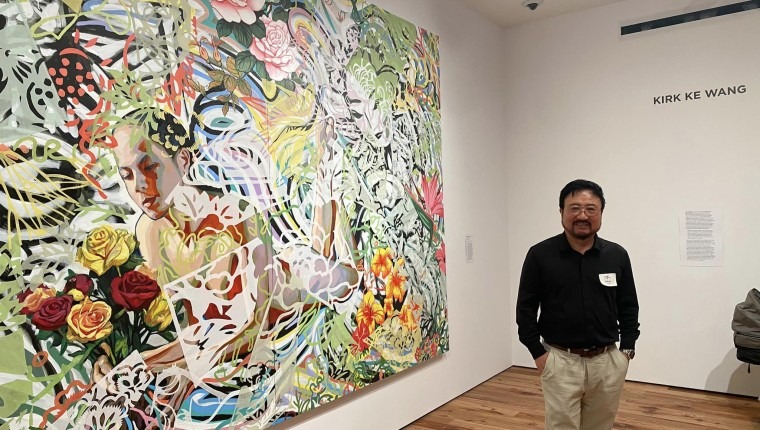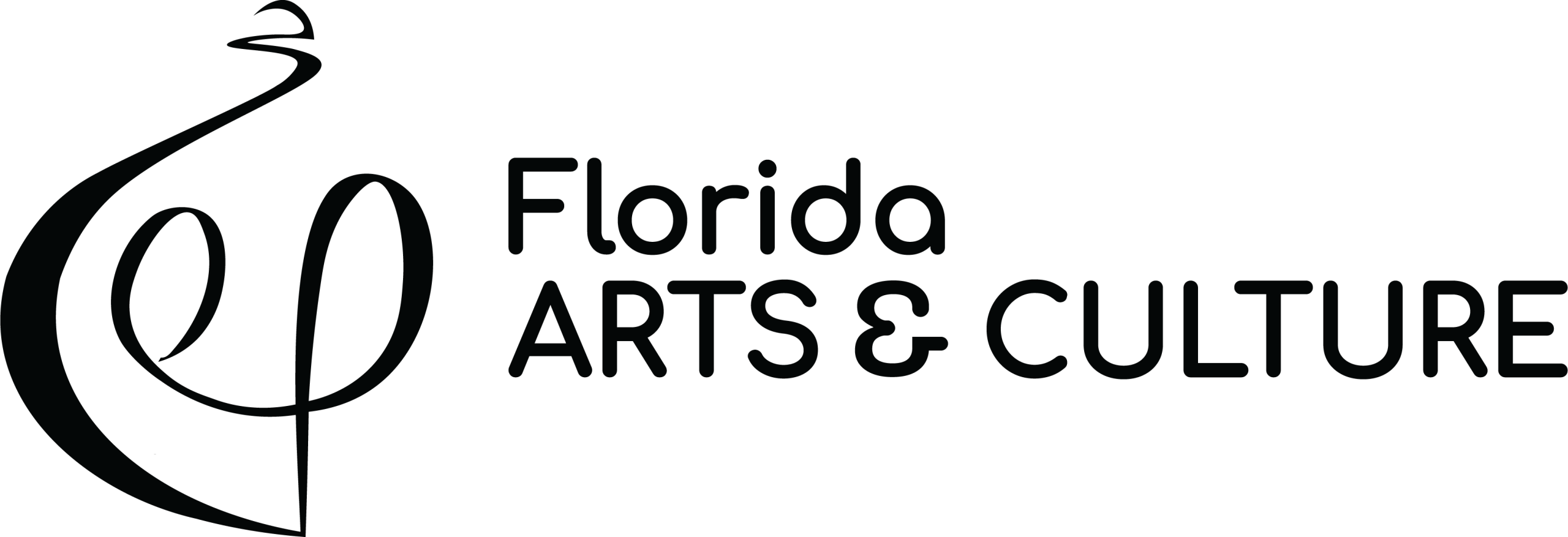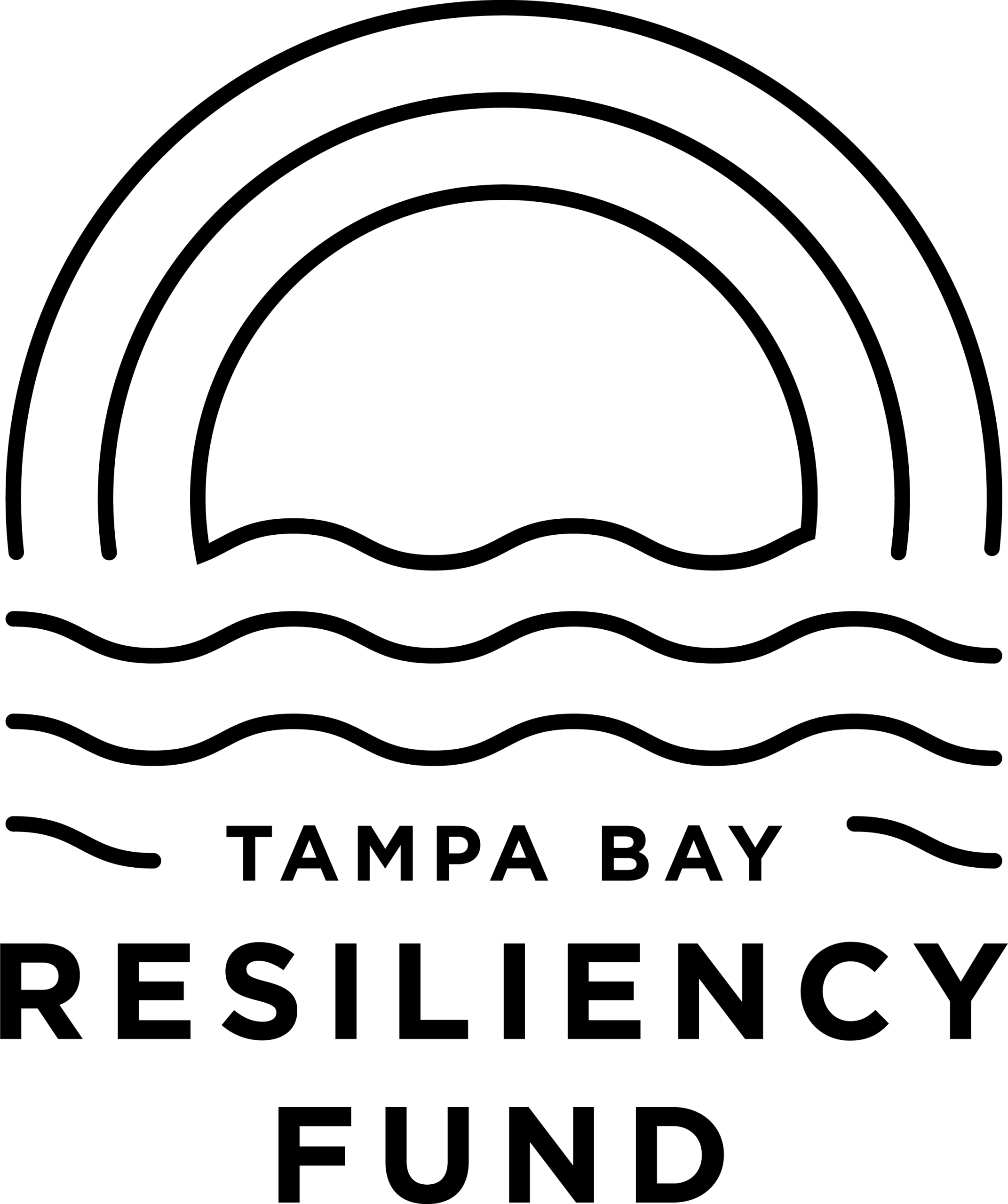A Research Project
for the Skyway Triennial
Through October 27
Sarasota Art Museum
Details here
This cloudy Saturday afternoon in June with sultry air was hypnotizing Oldsmar, a small city on the northern shore of Tampa Bay, into lassitude. There were very few cars slowly humming on the Tampa Road, a main street across town, leaving a trail of drowsiness.
I was driving to a post office not far from my home on the border between the Hillsborough and Pinellas County lines. I’ve driven back and forth to this post office for many years and never paid attention to the surroundings. There are few things to be noticed anyway, in this vicinity.
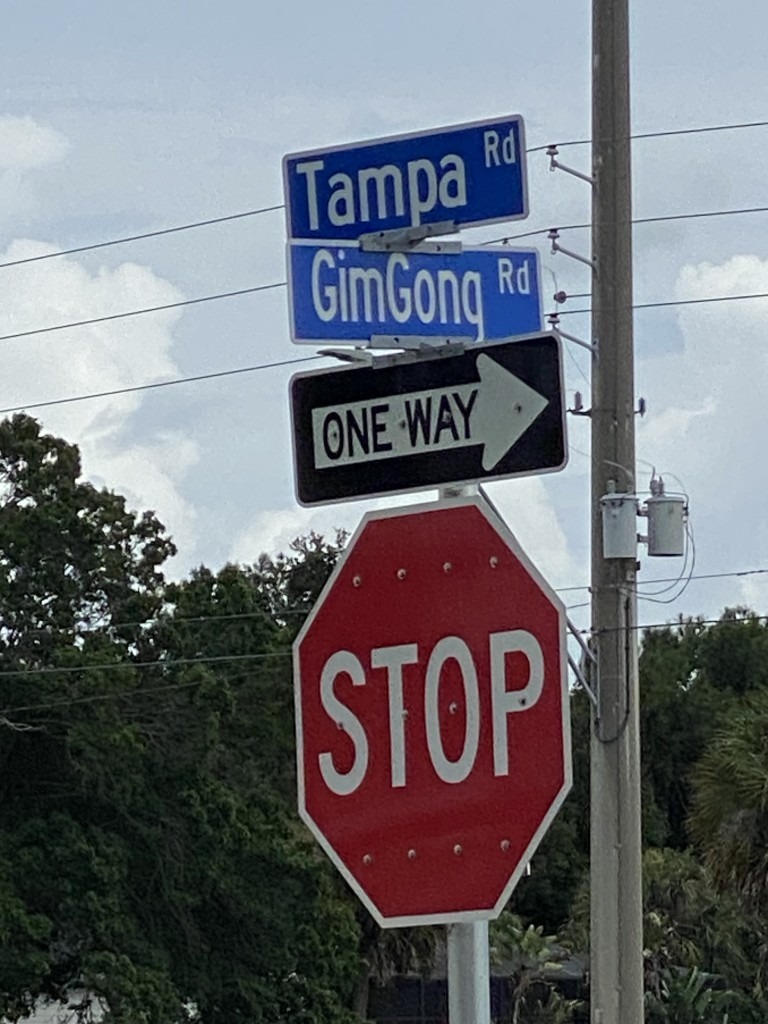
Approaching, I spot an odd-looking street sign on the right. If not for the slow traffic, I would never notice this insipid street. I study the spelling – it doesn’t resemble to any western language or Native American that we’re accustomed to see on street names here in Florida.
It looks more like a suggestion of an Asian name, GimGong Road. What the heck? Was I hallucinating?
I drove back after my business at the post office. Yes, it’s GimGong Road.

Compared to other metropolitan cities, few Asian people live in the Tampa Bay area, despite Asian communities growing here in recent years. I remember when I first arrived in Tampa in mid-1980s, the owner of the Oceanic Oriental Grocery Store in downtown Tampa asked me if I was a passing sailor from an Asian cargo ship docked at the Port of Tampa.
So how could a street in a non-Asian town be named after an Asian? Why?
Curious, I start my search online. I was astonished at what I found. The street, blocks from my home, was named to honor an Asian American, Lue Gim Gong (1857-1925), “The Citrus Wizard,” for his contribution to the citrus-growing industry in Florida 110 years ago.
Lue Gim Gong pioneered the cultivation of citrus trees that could withstand significant freeze and produce fruits that could be shipped over long distance without spoiling. Born in a farmer’s family in the Guangdong Province of China in 1857, he learned horticultural and pollinating techniques by working in the orchard with his mother.
At age 15, he moved to the United States with his uncle and worked as child labor in a shoe factory with other 35 Chinese laborers in North Adams, Massachusetts. Where he met Fanny Burlingame, “Mother Fanny” as Lue Gim Gong called her, who taught him English and sponsored him working as a gardener at her house.
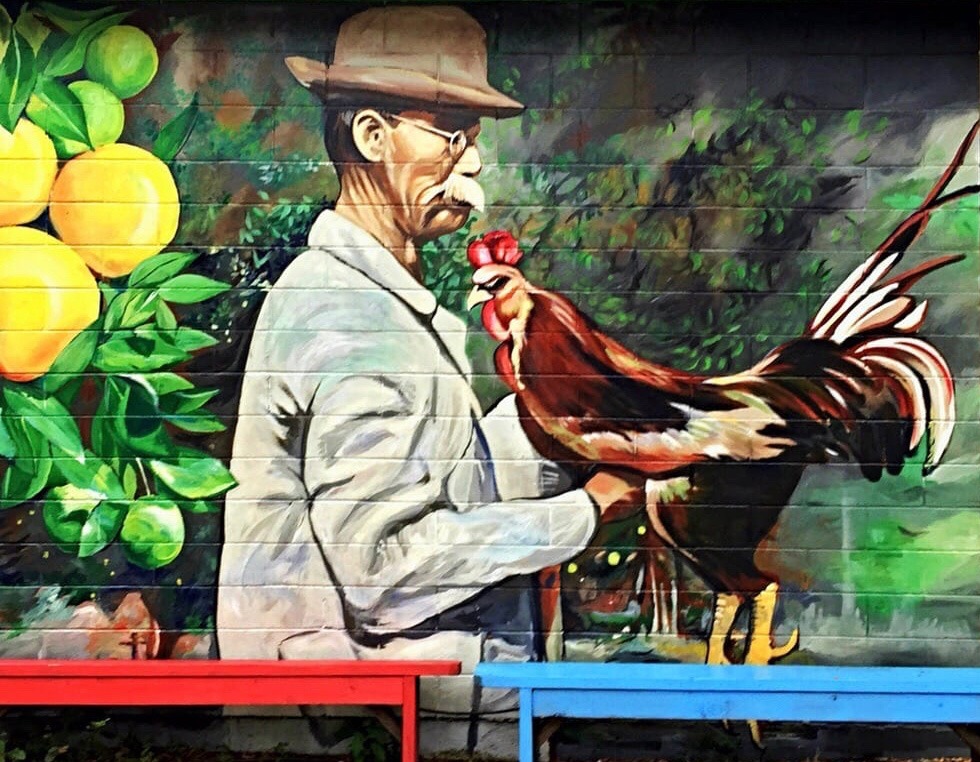
The Burlingame family purchased a winter home with an orange grove in Deland Florida and Lue moved there with them, tending their properties. When Fanny passed in 1903, the Burlingames returned to Massachusetts and left the orange grove to Lue Gim Gong, who lived there until his death in 1925, with the companies of two horses and a pet rooster.
Taking over the orange grove, Lue Gim Gong continued to experiment and cultivate the citrus fruits that transformed the industry. His variety of Valencia oranges and grapefruits earned him the Wilder Silver Medal by the American Pomological Society in 1911 – the first such award for citrus fruits.
At the 1933 World’s Fair, Lue Gim Gong’s citrus product was featured in the Florida Pavilion and his citrus legacy is still tasted today.
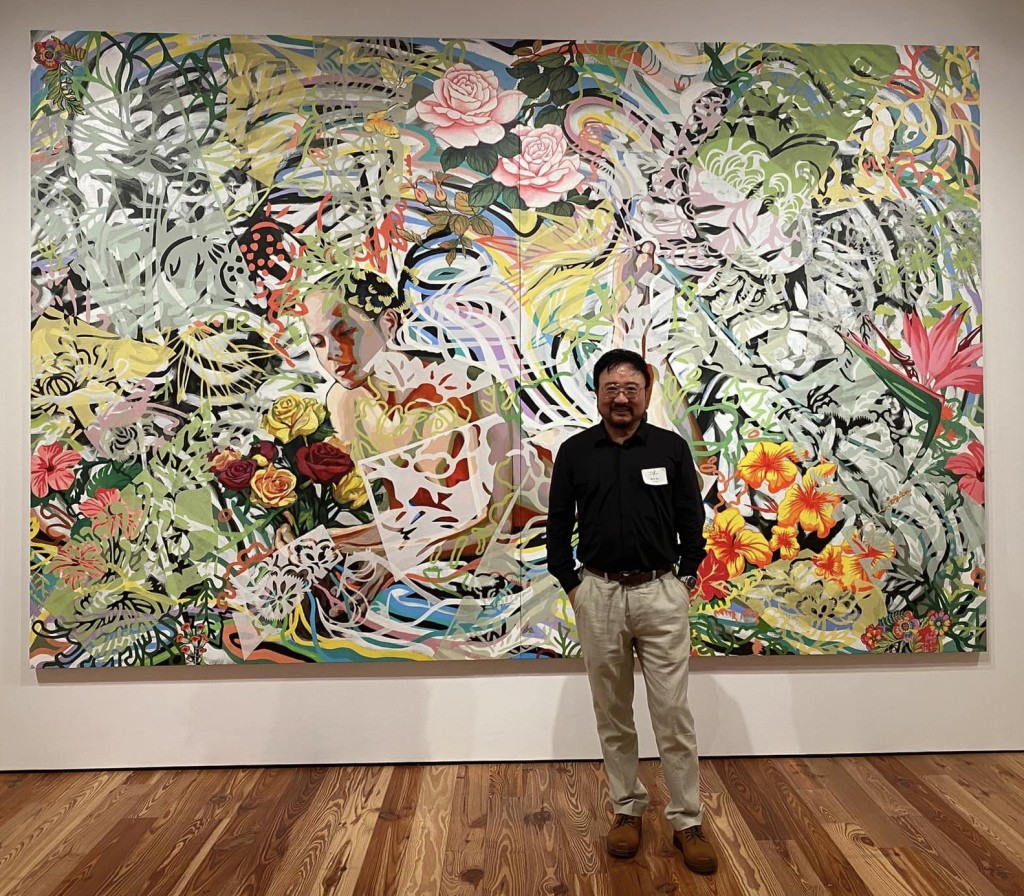
On June 21, 1925, 18 days after his death, the New York Times published a tribute to Lue Gim Gong, titled “Lue Gim Gong Honored By Savants – Gentle Chinese in Florida Won Medal for New Orange – A Master In His Field.”
The article’s first paragraph began, “Lue Gim Gong, who died recently at the age of 70 on his farm near De Land, Fla. aroused a singular interest and esteem among those who knew him, perhaps as much because of his mystical temperament, his integrity in business and his romantic career as because of his work in developing oranges and grapefruit to fit the need of Florida growers.”
In 1918, when Ransom Eli Olds, one of the pioneers of the American automotive industry, was developing the city of Oldsmar, he named a major street after Lue Gim Gong, called GimGong Road, honoring his contribution.

But in 1994, under pressure from developers, the City Council renamed the street “Commerce Boulevard.” Ten years later, Oldsmar Mayor Jerry Beverland made a huge effort to restate the tribute back to Lue Gim Gong. However, after consulting with legal counsel and finding that Commerce Blvd. was part of the business agreement, he decided to rename another road nearby instead.
That is where I discovered the street sign GimGong Road.
I read many homages to Mr. Lue Gim Gong’s achievements as a hardworking talented horticulturalist. However, with further research, I am fascinated by his life stories – a 15-year-old immigrant laborer, adopted son to a white American mother, a man escaped from a heterosexual marriage arranged by his family in China, a lonely soul outcast from his fellow countrymen in America, a loving life in the company of flowers, horses and a pet rooster…

As the New York Times mentioned about his “romantic career” in 1925, besides appreciating Lue Gim Gong as a celebrated legend, I am also interested in investigating his character as a young man, perplexed by his desire, love and sexual orientation, which was forbidden by the society of his time, ignored by historians, and misled by writers like Ruthanne Lum McCunn in her book Wooden Fish Songs that fabricated an impossible romantic affair with his adopted mother who was over 30 years older.
My research inspired me to create an art project regarding GimGong Road and the life of Mr. Lue Gim Gong.
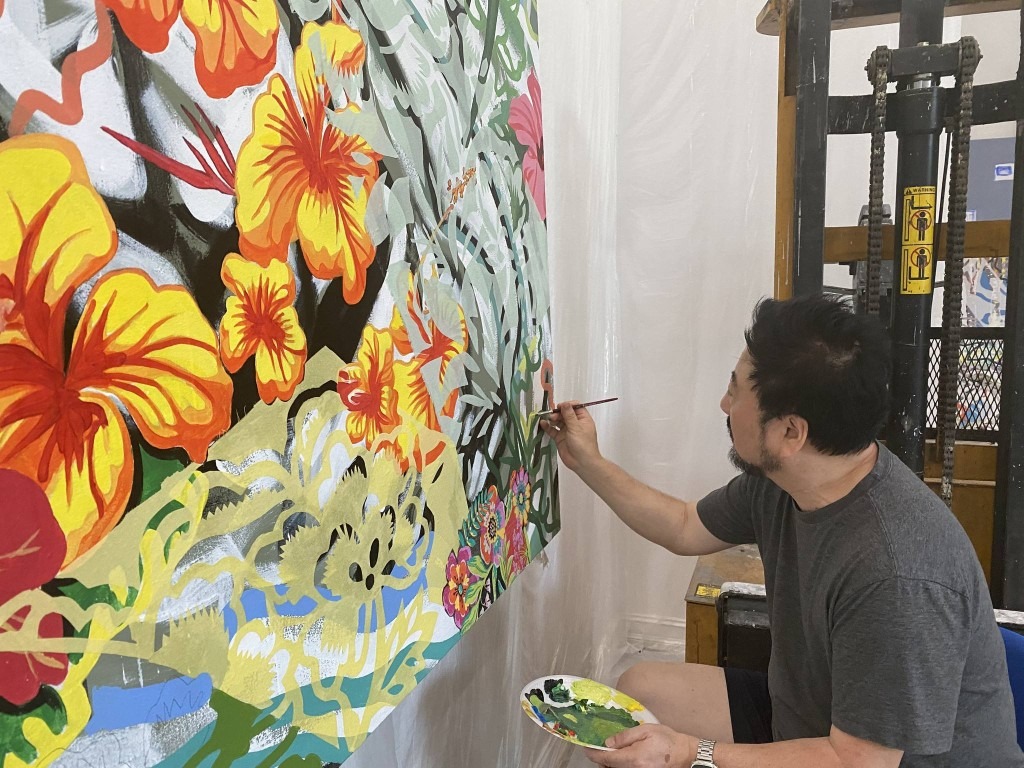
Many artists have created Lue Gim Gong’s image as an old man with a long white mustache holding a rooster, according to the historical photos. In my mind, I perceive him as a young man full of virtue, vitality, idealism – with visions of beauty, imagination and creativity.
He often lost himself in the garden, bewildered by the magical power of nature. He was sensitive, gentle, intelligent and resilient when facing the torment of solitude, prejudice and social constraints.

When answering the call for the application of the 2024 Skyway Triennial collaboration among 5 art museums in the Tampa Bay region, I proposed this GimGong Road project to the curatorial team.
My original proposal was a combination of mixed media with a sculpture, site-specific installation with video projections, and a mural-size painting. Due to space limitations, I had to scale things down for the Skyway exhibit, but here’s what I envisioned.
When entering the Sarasota Art Museum’s gallery space, visitors first encounter the GimGong Road street sign – the sculpture I created by following the actual street sign in Oldsmar.

I adopted the Asian aesthetics of papercuts for the sculpture. I painted the street sign in shades of yellows to represent the Asian identity in a western context. There is a patch of green grass at the bottom of the sculpture and flowers growing upwards along the pole.
A rooster (Lue Gim Gong’s lifelong companion) stands atop the sign, directs visitors to a road leading to a flowering garden. The road and flower garden are video projections on the gallery floor.
At the center of the flowery garden, the projected road passes through a gazebo suspending from the ceiling, appropriating the actual GimGong Memorial Gazebo in Deland Florida.

Visitors can walk through the gazebo enjoying a 360° view of carved panels depicting young GimGong tending the gardens and citrus trees. The gazebo is created in the same style as the street sign, but painted in pink symbolizing GimGong’s personal lifestyle. There is a light inside the gazebo projecting patterned shadows on the gallery floor.
Eventually the flowery road leads viewers to a mural-size painting on the wall. The young GimGong is lying in his garden, naked, contemplating the growth of flowers. There are two male and female deities hovering above watching and protecting him.
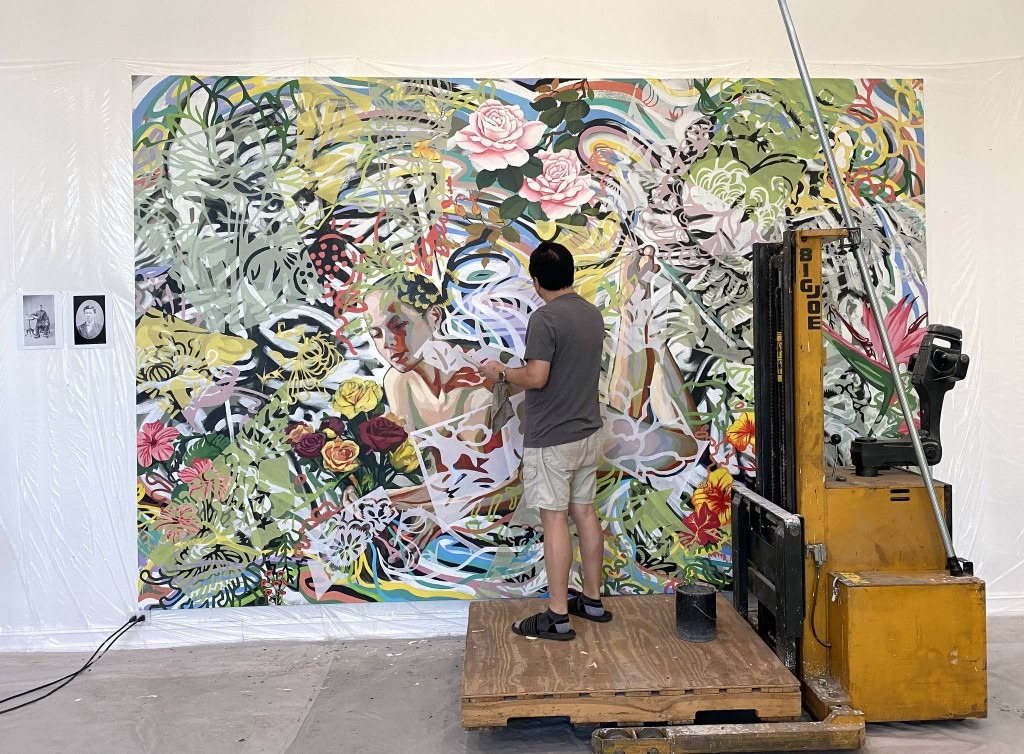
GimGong and the deities are covered by layers over layers of growing rhizomes, vines and flowers, as if nature has taken over when time passes.
It’s the same process for our memories of faded history.
Like the colorful and abstract layers in the painting, the lives of Asian Americans are vibrant, yet sometimes blurry or invisible.
Featured Skyway Artists
on view through October 27
at the Sarasota Art Museum
at Ringling College of Art + Design
Kim Anderson
Ryan Day
Sue Havens
Dominique Labauvie
Tatiana Mesa Paján
Samantha Modder
Roger Clay Palmer
Herion Park
Gabriel Ramos
Eszter Sziksz
Jill Taffet
Rob Tarbell
Kirk Ke Wang
Willow Wells
